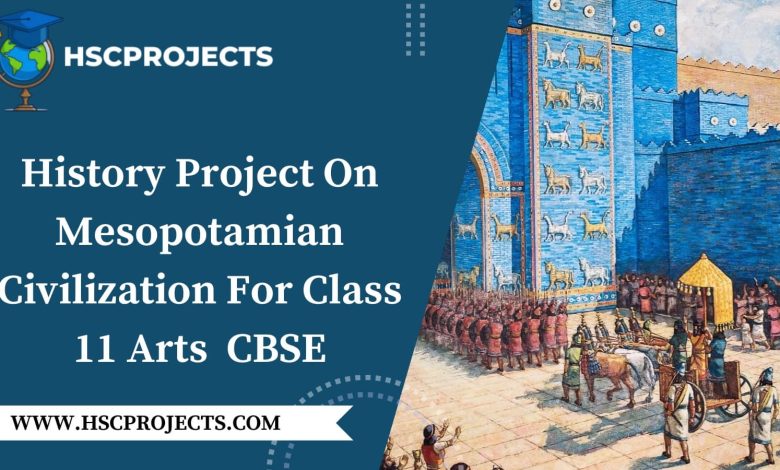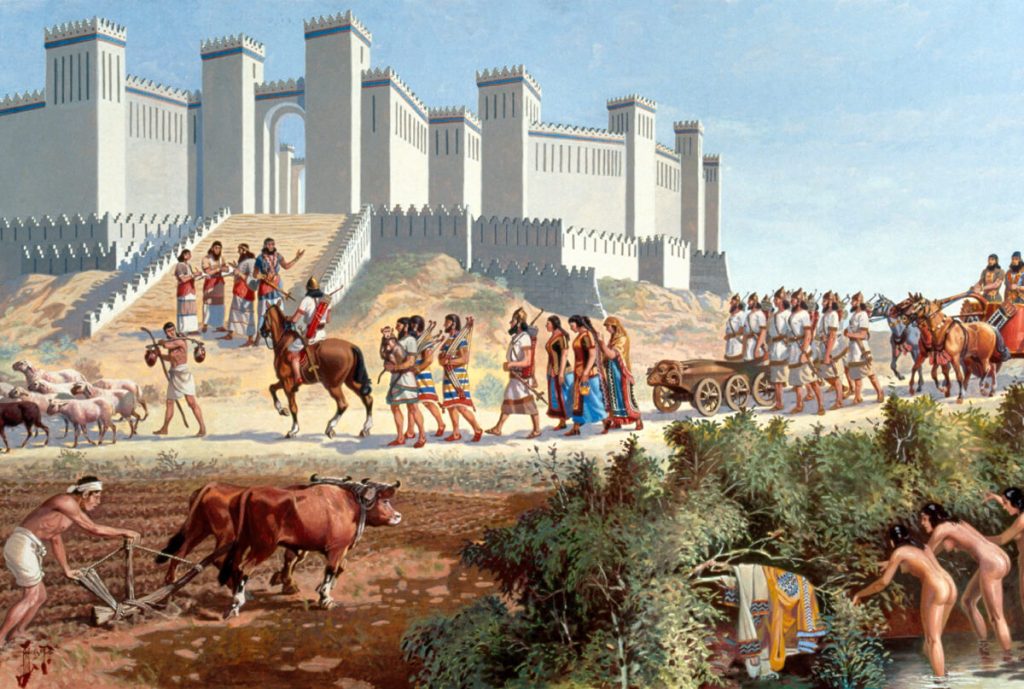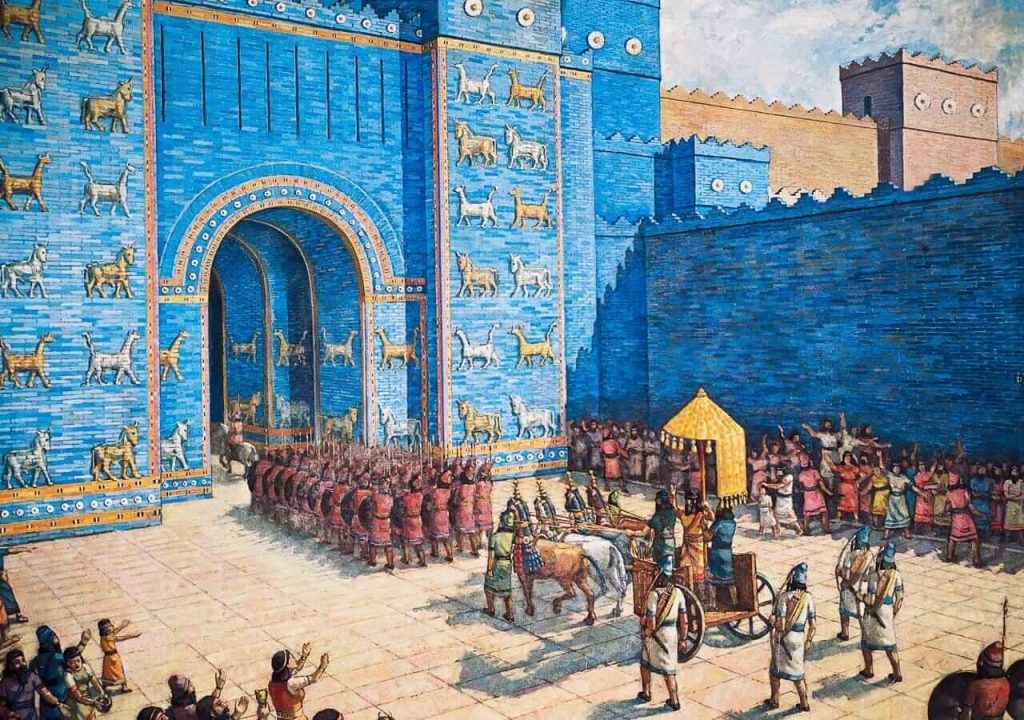
History Project On Mesopotamian Civilization For Class 11 Arts CBSE
Acknowledgment
Embarking on this exploration of Mesopotamia has been a journey enriched by the support, guidance, and contributions of numerous individuals and resources. As we present this project, we extend our sincere gratitude to those who have played pivotal roles in its realization.
We would like to express our appreciation to [Name], whose expertise and insights illuminated the historical nuances of Mesopotamia, providing a foundation for our exploration. Your guidance has been invaluable in shaping the depth and accuracy of our content.
A special note of thanks to [Name], who generously shared resources and references, enriching our understanding and enabling us to provide a comprehensive overview of Mesopotamian civilization. Your contributions have been instrumental in the research process.
Our gratitude extends to [Name] for their assistance in visualizing this project. The creation of maps, images, and timelines has added a dynamic dimension, enhancing the overall presentation and making the content more accessible.
To our peers and colleagues who provided feedback and constructive criticism, we express our appreciation. Your perspectives have been instrumental in refining the project and ensuring its accuracy and clarity.
Lastly, we acknowledge the enduring legacy of Mesopotamia and the countless scholars, historians, and archaeologists whose work has paved the way for our exploration. This project stands on the shoulders of their collective efforts to unravel the mysteries of this ancient civilization.
Thank you to all who have contributed to this endeavor. Your support has been integral to the success of this project, and we are grateful for the collaborative spirit that has enriched our exploration of Mesopotamia.
Introduction
Embarking on a journey through the annals of history, this project delves into the captivating realm of Mesopotamia – the cradle of civilization. Mesopotamia, situated between the Tigris and Euphrates rivers, emerged as a vibrant and influential region, laying the groundwork for the development of complex societies and the evolution of human culture.
Spanning the approximate timeframe from 3500 BCE to 539 BCE, Mesopotamia witnessed the rise and fall of city-states, the formulation of legal codes, and the flourishing of art, science, and literature. In this exploration, we aim to unravel the multifaceted layers of Mesopotamian civilization, examining its geography, political organization, social structure, economy, religion, achievements, and contributions, as well as its eventual decline and enduring legacy.
As we embark on this odyssey through time, guided by the remnants of ancient texts, archaeological discoveries, and scholarly insights, we invite you to join us in unraveling the tapestry of Mesopotamia. Together, let us traverse the landscapes of innovation, decipher the cuneiform scripts of ancient wisdom, and uncover the timeless echoes of a civilization that laid the foundation for the course of human history. Welcome to the exploration of Mesopotamia – a journey into the heart of our shared past.

Geography
Mesopotamians’ landscape, shaped by the Tigris and Euphrates rivers, played a pivotal role. The climate, though challenging, fostered agricultural development through innovative irrigation systems.
Political Organization
Operating under a city-state system, Mesopotamia boasted notable centers like Sumer, Akkad, and Babylon. Rulers such as Hammurabi left an indelible mark, evident in the enduring Hammurabi’s Code.
Social Structure
The societal fabric of Mesopotamia featured diverse classes – priests, rulers, commoners, and slaves. Intricacies of gender roles and family structures shaped daily life.
- Occupational Diversity: The social fabric of Mesopotamia was characterized by diverse professions. Craftsmen, merchants, and laborers contributed to the economic vitality, while priests held significant religious influence.
- Legal Framework: The Code of Ur-Nammu, predating Hammurabi’s Code, was an early attempt at codifying laws. It reflected the social norms and sought to maintain order and justice within the community.
- Slavery: Slavery was prevalent in Mesopotamia, with captives from wars often serving as slaves. They undertook various roles, from agricultural labor to domestic service.
Economy
Mesopotamia’s prosperity rested on fertile soil and advanced irrigation. Thriving trade routes, coupled with the evolution of currency, fueled economic growth.
- Specialization and Trade: Mesopotamians engaged in specialized occupations, leading to a system of trade. The city-states’ economies thrived on the exchange of goods and services, facilitated by the intricate network of rivers.
- Agricultural Innovation: The introduction of advanced irrigation systems, such as canals and dikes, revolutionized agriculture. The surplus food production allowed for population growth and the support of non-agricultural activities.
- Early Currency: Mesopotamia witnessed the evolution of the earliest forms of currency, initially in the form of silver bars. This innovation streamlined trade and economic transactions.

Religion
Mesopotamian religious beliefs were rich, with deities like Anu, Enlil, and Inanna. Ziggurats stood as monuments to their faith, tended by dedicated priests.
- Polytheistic Beliefs: Mesopotamians believed in a pantheon of gods and goddesses, each associated with specific aspects of life, nature, and the cosmos. These deities influenced daily rituals, festivals, and societal values.
- Role of Ziggurats: Ziggurats, towering temple structures, were central to Mesopotamian religious practices. They served as physical manifestations of the connection between the mortal realm and the divine.
- Divination Practices: Priests played a crucial role in divination, interpreting natural phenomena and events as messages from the gods. This practice sought to guide decision-making and predict future outcomes.
Achievements and Contributions
In the realm of knowledge, Mesopotamia pioneered the cuneiform script, made mathematical strides in Babylon, and exhibited architectural prowess with ziggurats. Literary treasures, like the Epic of Gilgamesh, showcased their cultural depth.
- Cuneiform Writing System: Mesopotamians developed cuneiform, one of the earliest writing systems. This script was impressed onto clay tablets using a wedge-shaped stylus, facilitating record-keeping, literature, and communication.
- Babylonian Mathematics: The Babylonians made significant contributions to mathematics, including the development of the sexagesimal system (base-60) and the earliest known trigonometric tables.
- Architectural Marvels: Mesopotamian architecture is exemplified by the construction of ziggurats and well-planned cities. These structures showcased advanced engineering and urban planning.
- Cultural Epics: The Epic of Gilgamesh, a literary masterpiece from Mesopotamia, remains one of the oldest known stories in human history. It explores themes of mortality, friendship, and the search for meaning.
Decline and Legacy
Challenges, including invasions, contributed to Mesopotamia’s decline. Yet, its legacy endured, influencing subsequent civilizations and shaping the course of history.
- Invasions and Conquests: Mesopotamia faced invasions from various external forces, including the Assyrians and Persians. These invasions, coupled with internal conflicts, contributed to the decline of the city-states.
- Enduring Legacy: Despite its decline, Mesopotamia’s legacy endured through its influence on subsequent civilizations. Legal codes, mathematical concepts, and cultural narratives continued to shape the development of societies in the ancient and classical world.
Visual Aids
- Artifact Showcase: Visual aids play a pivotal role in bringing the ancient world to life. The inclusion of images showcasing artifacts such as pottery, sculptures, and tools provides a tangible connection to the material culture of Mesopotamia. These artifacts offer glimpses into daily life, craftsmanship, and artistic expression.
- Excavation Sites: Incorporating visuals of excavation sites and ongoing archaeological work enhances the project’s authenticity. Images capturing the meticulous process of uncovering remnants of ancient Mesopotamian cities contribute to a deeper appreciation of the research efforts invested in understanding this civilization.
- Reconstructed Scenes: Utilizing artistic representations or digital reconstructions, the project can visually reconstruct scenes from ancient Mesopotamia. These depictions can showcase aspects of daily life, religious ceremonies, and architectural marvels, allowing viewers to envision the vibrancy of the ancient cities.
- Interactive Maps: Beyond static maps, interactive maps can be employed to illustrate the dynamic nature of Mesopotamia’s geography, city-states, and trade routes. Viewers can explore key locations, gaining a spatial understanding of how rivers, mountains, and urban centers shaped the civilization.
- Timeline Visualization: A visual timeline featuring key events and developments in Mesopotamian history provides a chronological framework. This aids in comprehending the sequence of political, social, and cultural changes over the millennia, offering a structured overview of the civilization’s evolution.
- Comparative Graphics: Visual aids can include comparative graphics that juxtapose Mesopotamian achievements with contemporaneous civilizations. This comparative approach enhances understanding by placing Mesopotamia within the broader context of ancient world history.
Daily Life and Customs
- Housing and Urban Planning: Explore the architecture of Mesopotamian homes and the layout of cities. Discuss the construction materials, design principles, and the development of early urban planning, highlighting how they adapted to the challenges of the environment.
- Diet and Cuisine: Investigate the dietary habits of Mesopotamians. Discuss the types of food available, cooking methods, and the cultural significance of certain dishes. This offers insights into the agricultural practices and culinary traditions of the time.
- Clothing and Adornments: Delve into the clothing styles and personal adornments of Mesopotamian society. Discuss the materials used, the role of clothing in expressing social status, and any symbolic significance attached to specific garments or accessories.
Technological Advancements
- Metallurgy: Explore the advancements in metallurgy, particularly in the crafting of tools, weapons, and artistic objects. Discuss the materials used, the techniques employed, and the impact of metallurgical innovations on daily life and warfare.
- Pottery and Ceramics: Mesopotamia was renowned for its pottery. Examine the various styles, techniques, and purposes of Mesopotamian pottery. Discuss how pottery played a role in daily life, trade, and cultural expression.
- Water Management Systems: Elaborate on the sophisticated water management systems developed by Mesopotamians to harness the power of the Tigris and Euphrates rivers. Explore the construction of canals, aqueducts, and reservoirs, emphasizing their crucial role in agriculture and urban development.
Cultural Exchange
- Trade and Diplomacy: Mesopotamia’s strategic location facilitated extensive trade networks. Investigate the commodities exchanged, the routes taken, and the diplomatic relations established with neighboring regions. Highlight how this cultural exchange influenced Mesopotamian society.
- Language and Linguistic Diversity: Mesopotamia was home to various linguistic groups. Explore the linguistic diversity within the region, including the Sumerian language and later Akkadian dialects. Discuss the role of language in administration, literature, and cultural identity.
- Influences on Neighboring Civilizations: Examine how Mesopotamian ideas, technologies, and cultural practices influenced neighboring civilizations such as Egypt, the Indus Valley, and Anatolia. Investigate instances of cultural diffusion and the lasting impact on global historical developments.
Rituals and Festivals
- Ceremonial Practices: Uncover the rituals and ceremonies that were integral to Mesopotamian religious and civic life. Explore how these ceremonies, held in temples or public spaces, reinforced social bonds, expressed cultural identity, and appeased deities.
- Festivals and Celebrations: Highlight the significance of festivals in Mesopotamian culture. Explore the timing, customs, and purposes of major celebrations, shedding light on how these events brought communities together and provided a sense of shared identity.
Conclusion
In concluding this immersive journey into the heart of Mesopotamia, the cradle of civilization, we find ourselves standing amidst the echoes of an extraordinary past. Mesopotamia, with its fertile plains nurtured by the Tigris and Euphrates rivers, gave rise to a civilization that left an indelible mark on the course of human history.
As we navigated through the complex tapestry of Mesopotamian life, we witnessed the intricacies of its geography, the resilience of its political structures, the dynamics of its social hierarchy, and the vibrancy of its economy. The religious fervor that built towering ziggurats and the intellectual endeavors that birthed the cuneiform script stand testament to a society rich in diversity and innovation.
From the bustling city-states of Sumer, Akkad, and Babylon to the quietude of agricultural landscapes shaped by advanced irrigation systems, Mesopotamia unfolded as a mosaic of achievements. The meticulous legal codes etched in stone, the wisdom preserved in the Epic of Gilgamesh, and the mathematical ingenuity showcased in Babylonian tablets all spoke to a civilization that reached for the stars in its pursuit of knowledge.
Yet, as we explored the heights of its achievements, we also delved into the shadows of its decline. Invasions, conflicts, and the shifting tides of history led to the waning of Mesopotamian glory. However, even in its decline, Mesopotamia bequeathed a legacy that transcended its physical boundaries.
This exploration sought not only to unravel the historical nuances of Mesopotamia but to ignite a curiosity that extends beyond its ancient borders. The enduring legacy of Mesopotamia echoes in the legal systems we uphold, the architectural wonders we admire, and the stories we tell. It reverberates in the foundational principles of society, in the artistry that captures our imaginations, and in the mathematical concepts that underpin our understanding of the world.
As we bid farewell to this exploration, may the echoes of Mesopotamia resonate in our collective consciousness. May the lessons learned from its successes and challenges inform our understanding of the past and inspire our endeavors for the future. Mesopotamia, with its fertile crescent, rivers of wisdom, and echoes through time, remains an eternal cradle from which civilizations have drawn inspiration.
Bibliography
- Kriwaczek, Paul. “Babylon: Mesopotamia and the Birth of Civilization.”
- Roux, Georges. “Ancient Iraq.”
- Van de Mieroop, Marc. “A History of the Ancient Near East, ca. 3000-323 BC.”
- Saggs, H.W.F. “The Greatness That Was Babylon: A Survey of the Ancient Civilization of the Tigris-Euphrates Valley.”
- Kramer, Samuel Noah. “History Begins at Sumer: Thirty-Nine Firsts in Recorded History.”
- Nemet-Nejat, Karen Rhea. “Daily Life in Ancient Mesopotamia.”
- Bertman, Stephen. “Handbook to Life in Ancient Mesopotamia.”
- Foster, Benjamin R. “Before the Muses: An Anthology of Akkadian Literature.”
Certificate of Completion
[Student’s Name][Class/Grade Level]This is to certify that I, [Student’s Name], a [Class/Grade Level] student, have successfully completed the “History Project On Mesopotamian Civilization For Class 11 Arts Cbse.” The project explores the fundamental principles and key aspects of the chosen topic, providing a comprehensive understanding of its significance and implications.
In this project, I delved into in-depth research and analysis, investigating various facets and relevant theories related to the chosen topic. I demonstrated dedication, diligence, and a high level of sincerity throughout the project’s completion.
Key Achievements:
Thoroughly researched and analyzed History Project On Mesopotamian Civilization For Class 11 Arts Cbse.
Examined the historical background and evolution of the subject matter.
Explored the contributions of notable figures in the field.
Investigated the key theories and principles associated with the topic.
Discussed practical applications and real-world implications.
Considered critical viewpoints and alternative theories, fostering a well-rounded understanding.
This project has significantly enhanced my knowledge and critical thinking skills in the chosen field of study. It reflects my commitment to academic excellence and the pursuit of knowledge.
Date: [Date of Completion]Signature: [Your Signature] [School/Institution Name][Teacher’s/Examiner’s Name and Signature]
In order to download the PDF, You must follow on Youtube. Once done, Click on Submit
Follow On YoutubeSubscribed? Click on Confirm
Download History Project On Mesopotamian Civilization For Class 11 Arts CBSE PDF






